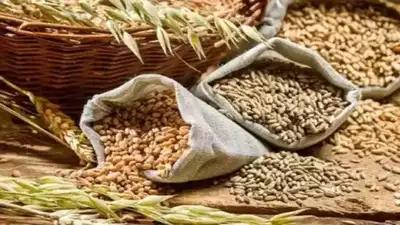India's Agricultural Sector Set for Record Growth
India is on the brink of achieving unprecedented levels in foodgrain production by the year 2025. This remarkable growth is largely attributed to favorable monsoon conditions, despite ongoing challenges in the production of pulses and oilseeds. The Agriculture Ministry's early estimates are optimistic, predicting a record kharif (summer) foodgrain production of 164.7 million tonnes for the 2024-25 crop year.

Winter Crop Planting Shows Steady Progress
As of mid-December 2024, wheat has been sown across 29.31 million hectares, with total rabi (winter) crops covering 55.88 million hectares. Agriculture Secretary Devesh Chaturvedi expressed optimism about the crop prospects for the year, though he cautioned about potential heat waves in February-March that could impact the winter wheat harvest.
Agricultural Growth Projections
The agricultural sector is expected to recover strongly, with growth projections of 3.5-4 per cent in 2024-25, a significant increase from 1.4 per cent in the previous fiscal year. Agri-economist S Mahendra Dev credits this improvement to a good monsoon and a rise in rural demand.
Challenges and Government Initiatives
Despite the positive outlook, the sector faces hurdles, including climate change-induced weather anomalies affecting crops in certain regions. In response, the government plans to launch the National Mission on Edible Oils - Oilseeds (NMEO-Oilseeds) in 2025, with a substantial budget aimed at reducing import dependency.
Technological Advancements and Support Schemes
The horticulture sector has seen remarkable progress, thanks to improved farming practices and technology adoption. The government's PM-KISAN scheme continues to provide crucial support to farmers, with new agricultural schemes set for full implementation in 2025.
Looking Ahead
The coming year is crucial for India's agricultural sector as it strives to balance traditional farming practices with technological innovation. The success of new initiatives and their implementation will play a key role in determining the sector's trajectory toward sustainable growth and self-sufficiency in key crop categories.









Comments